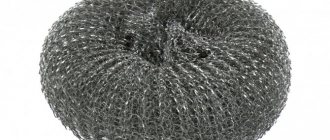The light commercial vehicle produced domestically by the GAZ plant was to the taste of both entrepreneurs and drivers - the vehicle turned out to be quite maneuverable, comfortable and profitable to operate. But it also has a number of serious shortcomings. Among these are poor thermal insulation: in summer it is always hot in Gazelle, and in winter you have to constantly treat your back after drafts. However, knowing how to insulate a GAZelle, you can significantly improve the situation and get rid of most of the troubles.
By insulating your GAZelle, you will not suffer from environmental temperature influences
Gazelle stove: features and principles of operation
In order not to freeze when frost sets in, on the portal you can buy a gazelle stove radiator of reliable quality. The operation of the device is based on the same as in any other car where the engine is liquid cooled. Liquid circulates throughout the radiator continuously during the trip. It doesn't matter whether the thermostat is closed or open.
To improve the heating function, the fluid comes out from the hottest place in the engine - the cylinder blocker head. Even if the engine has not yet reached operating temperature, heated air is already coming from the deflectors.
The radiator has a tap; by changing its position, you can change the direction of fluid movement. It will go to the radiator or, on the contrary, a reset will occur. By opening the tap more, they increase the flow of warm air that warms the interior.
Convenient adjustment is carried out through the control panel on the heater. The intensity of work depends largely on the high-speed rotation of the impeller. Increasing the speed of the motor increases the warm airflow.
In addition, the faucet has an electric drive with which the valve changes position. The airflow is directed where you need it to be warm - on your face, on your legs or arms, on the windshield.
The heated liquid circulates through the main pipes and enters the radiator, which heats up. At the same time, air from the fan passes through it, then it enters the air ducts and, when finally heated, exits into the cabin.
Stages of work
We prepare tools and materials.
The insulation process itself is carried out in several main stages. To begin, select a tool:
- scissors;
- stationery knife;
- ruler;
- pencil;
- marker (yellow and black);
- paper and tape.
Then models are made for each section of the hood (can be made of paper or cardboard). This allows you to accurately determine the required volume of material. On average, the hood of a sedan requires about 60-70x100 cm of insulation.
All blanks must be cut out into shapes and signed with a marker (this allows you to do the work efficiently and not get confused).
The finished patterns must be laid out on a heat-insulating material, attached with tape and traced along the outline with a marker.
Now you can use scissors and carefully cut out the blanks.
The next important step is preparing the hood.
Here it is important to thoroughly wash the inner surface with water and shampoo and degrease it well with a solvent. If you want to save time, you can immediately take the car to the wash.
Now carefully apply the prepared pieces of insulation to “your” cells. Thanks to the self-adhesive base, there is no need to do any additional manipulations to apply the adhesive composition.
15-20 minutes of work and the thermal insulation of the car under the hood is ready.
Options for sticking thermal insulation material.
Which radiator to choose: pros and cons
Many people prefer a copper radiator. There are a number of main reasons for this:
high thermal conductivity, as a result, improved heating;
clean, even soldering, no oxides;
excellent maintainability, since copper is soft and easy to solder;
improved performance indicators, the presence of an auxiliary tank.
Why do many car owners choose an aluminum radiator? It has an affordable price, 1.5-2 times lower than copper. Because of this, it is more common in the auto world, with the latest models of cars being equipped with aluminum radiators.
But the device has a significant disadvantage - lower thermal conductivity. In addition, the material is subject to corrosion and the functioning of the heating system is disrupted. If defects occur in the tubes, it is difficult to solder them again - you have to replace the entire assembly.
Stove on an old gazelle: how to modernize
Insufficient heating, cold air blowing in, poor ventilation occur due to the peculiarities of the heating design of the previous release. The reasons are various:
poor crane capacity.
If you have an old-style gazelle stove, which was manufactured before 2003, you should think about disassembling and cleaning. To do this, remove the rear barrel, remove plaque, and clean the pipes.
But not always after such techniques the stove starts working as before, and little heat still comes out. In this situation, you should think about modernization.
If improved modification is necessary, you can install a copper radiator, or install a forced pump. Insulating the radiator, using special sealant and foam rubber seals, installing an additional pump under the vacuum booster can help in 50% of cases. Silicone sealant provides reliable results in filling cracks and sealing joints.
When should you change your stove motor?
The cold weather is coming, and you have problems heating the interior - it's time to check the heater and carry out a comprehensive repair. To bring the stove back to life, remove the radiator and motor, disassemble, clean and lubricate.
If a burning smell occurs when the radiator is turned on, and charging in position 3 decreases sharply, pay attention to the gazelle stove motor, which is more profitable to replace than to suffer from repairs. Moreover, the electric motor is practically irreparable, and the new versions have reliable protection - a durable plastic frame.
Unfavorable signs during work:
If you ignore it, you may be left without heating your car at the most inopportune moment.
HOW TO INSULATE A GAZELLE TENT BOOTH
Protecting a tented Gazelle from the cold is not so easy. As the simplest and most cost-effective option for insulation, you can use the following method. Take a fairly thick plastic film, fold it in half, and place insulation inside - polystyrene foam or polyurethane foam. This canopy is fixed on the inside of the main awning. The edges of the film are glued together with any polymer glue or simply soldered. All work is not difficult, and such insulation will be enough for at least one season, depending on the intensity of use of the car.
A more effective method of insulating the Gazelle Farmer is to build up its sides with sheets of plywood 5-10 mm thick. It is also recommended to make a roof from it. If the inner surface of plywood sheets is covered with foil insulation (it can also be shot with a construction stapler), the effectiveness of thermal insulation will increase several times. The fundamental way to insulate a tented Gazelle is to use a special awning designed to operate at temperatures down to -40 degrees.
How to make the interior of a gazelle warm?
I drive all year round - both summer and winter, but there are problems with heating the car. This is especially true for those drivers who often drive on highways.
There are a number of effective actions that will help correct the situation. First of all, seal the interior and door openings. Glue the snail and shield with 2-sided noise or isolon. Thermal insulating materials effectively help maintain a constant temperature in the car, even when it’s below zero outside. The heat will stop leaving, the flow of cold air will decrease significantly.
A proven option from many drivers is to install another radiator in addition to the standard one. For convenience, they are placed under one cover. The tubes are connected to the cooling system of the gazelle.
Passing through 2 heaters:
increases the heating of antifreeze;
the interior warms up quickly;
heat is retained as much as possible inside the car.
If you have problems heating the interior of a gazelle during the off-season and winter, contact our specialists for advice. They will tell you the best options for how to warm up the interior, and what is best to use for this in a particular case.
Don't wait until winter, when the discomfort from cold air is most acute. Call or write right now. On the website you can order auto parts; see the information below for prices and benefits.
Source
How to insulate the body and cabin of a Gazelle for the winter
Inexpensive, maneuverable and quite economical to operate, GAZelle has long become popular among drivers and entrepreneurs involved in light-duty cargo transportation. This car has become popular not only for urban, but also intercity cargo transportation. To date, several modifications of this truck have been produced, which can be found throughout the country - from the Caucasus to the regions of the far north.
Advice! What winter oil is best to put into the engine?
Despite the sufficient number of available advantages, the Gazelle has one unpleasant feature - the almost complete absence of factory thermal insulation both in the cabin and in the body. This causes the cabin to be too “hot” in summer and cold in winter, which is especially noticeable when traveling long distances. Self-insulation of the Gazelle's cabin will help you protect yourself from drafts in the cabin and significantly increase comfort when traveling in winter - an activity that is not particularly costly, both in terms of material components and in terms of time.
The Gazelle cabin is the main element of comfort
The main reason that the Gazelle cabin cannot warm up in winter without additional heating sources is that the engine is not able to reach an acceptable temperature for heating the interior. A way out of this situation may be to install a screen between the radiator grille and the radiator itself. Any dense material is quite suitable for this - cardboard, plywood, a piece of foil insulation. This step will dramatically reduce the flow of cold air to the engine, which will quickly return to normal temperature and the cabin will warm up. With the onset of spring, the screen is dismantled.
Before insulating the Gazelle’s cabin, which is used in a particularly harsh climate, it makes sense to close the air intakes located on the hood closer to the windshield. For this, it is permissible to use the same cardboard, but if it is not available, you can simply seal them with thick adhesive tape/insulating tape - this will be enough for several trips, and it will become noticeably warmer in the Gazelle’s cabin. Based on the recommendations of experienced drivers, high-quality insulation of the Gazelle cabin with your own hands is impossible without insulating the doors. They have special ventilation openings necessary for cabin ventilation.
As practice shows, the lower openings can be completely sealed, leaving only those located in the middle open - with a significant reduction in heat loss, ventilation in the cabin will remain sufficient. In parallel with this, you can glue all the seams/joints in the Gazelle’s cabin with automotive sealant, and if you have time, anti-corrosive treatment won’t hurt, especially if the car is not new.
Important! Since the above steps for insulating the cabin will require dismantling the door trim, it makes sense to additionally seal the internal cavities with heat and sound insulating material, as a result of which the insulation of the cabin will become more effective.
It is rare that a Gazelle can boast of a perfect fit of the doors to the cabin. This significantly reduces the temperature inside. This difficulty can be eliminated by installing new rubber seals, which can be purchased at any construction market. Due to the presence of an adhesive layer, they can be installed in a few minutes. It is worth paying attention to the door hinges - if they wear out, they can cause cracks to form. As a rule, tightening them helps, and if they are very worn, the best solution is to replace them. Without these conditions, the insulation of the Gazelle will be ineffective.
The insulation of the Gazelle will be incomplete if all the joints in the cabin, of which there are plenty, are not treated. To eliminate the possibility of cold air entering the cabin, all of them must be thoroughly coated with sealant. If the insulated Gazelle cabin will be used in conditions of very low temperatures, a special sealing material is additionally glued on top of the sealant. Such self-insulation measures are usually sufficient to significantly increase the temperature in the cabin.
If this is not enough, you can supplement the insulation of the Gazelle cabin for the winter using special materials:
- polyurethane foam - inexpensive insulation, with low thermal insulation characteristics;
- expanded polystyrene - excellent thermal insulation characteristics and low cost have made it very popular when insulating the Gazelle, but care must be taken when working due to the fragility of the material;
- foil insulation on a foam base - despite the high cost, saves not only from the winter cold, but also from the summer heat, preventing the cabin from heating up intensely.
Installation of such materials will require complete dismantling of the interior trim of the Gazelle cabin. In parallel with this, it is advisable to carry out an inspection in order to identify pockets of corrosion, with their subsequent treatment. It is advisable to use polymer-based adhesive for gluing insulation, which is able to withstand sudden temperature changes. In the same way, you can insulate the cabin of a Farmer-type Gazelle by preparing a sufficient amount of material in advance.
Advice! Many drivers do not pay enough attention to places such as the area around the handbrake and gearshift knob. If they are not sufficiently processed, they will certainly become a source of cold air, reducing the effect of all measures taken to insulate the cabin.
Before insulating the body of a Gazelle, especially an all-metal one, it is also necessary to glue all existing joints, over which a sealing tape is glued. It is worth keeping in mind that the factory thermal insulation of this truck is practically not provided. Therefore, the amount of work that will have to be done for normal insulation will be significant. All work on insulating the Gazelle body begins with assessing the condition of the seals on the doors, especially the hinged doors located on the side.
Over time, the side door becomes loose, and solving the problem by replacing the mechanism is, although optimal, a very expensive solution. Instead, before the main insulation work, you can use a wide sealing tape with a soft structure - a tape made of durable polyurethane will last the longest. Just like in the cabin, it is necessary to seal up unnecessary ventilation holes, most of which are located in the pillars, especially those located behind the last windows.
Cold in the cabin (Gazelle Business)
January 29, 2012, 10:42 pm #1
Gazelle business, Ulyanovsk engine. The cabin is such a mess. Antifreeze is visually normal. who has encountered this. Or is this the same as with the 402 engine and the old cabin?
UAZ Patriot Lifan Breez
January 29, 2012, 10:53 pm #2
alnor, January 29, 2012, 10:42 pm, #1
Gazelle business, Ulyanovsk engine. The cabin is such a mess. Antifreeze is visually normal. who has encountered this. Or is this the same as with the 402 engine and the old cabin?
Wow, you're really not okay. suppliers come to us in Tashkent. that the temply one is blowing weakly. or starts blowing when the revs. write more what to how
January 30, 2012, 21:37 #3
Of course it's not okay. here I read some kind of electric power supply on the pipe. Tomorrow I'll take a look myself, and then I'll go to the service center. I wonder if they will do it under warranty or not. You need to touch the pipes or something. too lazy to climb. And so in the parking lot I started it, it warmed up to 80, the windows came out, well, about 20 degrees. In general, it was a little warm, when I started it started to cool down, well, in short, it was cold. like this. I had a 405 and an old 6-seat panel and it was hot in a blouse in the winter, I went to Moscow, and here I can’t unbutton my down jacket.
February 2, 2012, 14:40 #4
They definitely have to fix it under warranty, I also race in my gazelle wearing a photo shirt, it’s really hot
Mercedes-Benz CL Mercedes-Benz 350 D
February 2, 2012, 15:30 #5
Either the thermostat is closed, turn it on and feel it, or the heater valve does not open. Put the pump on the stove, it costs 700 rubles and I forgot about it. It often gets airy, but the pump doesn’t care, it pushes through right away.
SsangYong Actyon Sports AX-7 cool! Nissan Bluebird Le-Grand
February 2, 2012, 17:00 #6
Yeah, I installed a Gazelle electric pump on a UAZ, it helped
True, it was dripping a little (it turned out to be clumsy) Threat thermos is faulty, let OD change it, if anything.
February 5, 2012, 09:47 #7
Guys, tell me; Today I started to start the gas business, black smoke came out, I opened the hood and where the rack goes to the injectors, gasoline drips straight onto the catalyst, what the hell.
Volvo FH 12 GAZ Gazelle
February 5, 2012, 10:46 #8
First, look at the antifreeze in the tank; at UMP it quickly disappears. Check the hoses near the electric faucet before and after, they should be hot. In general, the stove on gazelles is hot
SsangYong Actyon Sports AX-7 cool! Nissan Bluebird Le-Grand
5 February 2012, 13:45 #9
sasha944, February 5, 2012, 09:47, #7
Guys, tell me; Today I started to start the gas business, black smoke came out, I opened the hood and where the rack goes to the injectors, gasoline drips straight onto the catalyst, what the hell.
This is for the fire
Probably a crack in the ramp. It would be better if you bought a KIA Bongo.
April 7, 2012, 08:07 #10
April 7, 2012, 08:11 #11
next to the battery (if you stand with your face behind it), disconnect the black chip and fill it with the simplest antifreeze! I live in Tashkent
7 June 2014, 14:03 #12
7 June 2014, 14:09 #13
I have a Gazelle Business It was cold in the cabin What’s strange At times the stove burned like a Bad one and sometimes not so much Today the electric drive of the stove damper started smoking, it’s located next to the Battery (not a fact that’s what it’s called) I drained the antifreeze and took it off and saw a FILTER MESH at the inlet and of course it’s dirty What will happen warm without circulation I cleaned the mesh and bought a new one Tomorrow I'll see what happened
December 15, 2014, 13:47 #14
The problem is the same, slightly warm air is blowing, I changed the pump, the electric valve for the stove, installed an additional pump, I came to the conclusion that the central damper does not close
December 15, 2014, 13:49 #15 + 1
and to get to it you need to disassemble the entire torpedo, in short, the gazelle business was invented by the devil, that’s a fact.
Eastern region of Voronezh region
December 15, 2014, 20:11 #16
Driver of the Hell Machine, December 15, 2014, 13:47, #14
The problem is the same, slightly warm air is blowing, I changed the pump, the electric valve for the stove, installed an additional pump, I came to the conclusion that the central damper does not close
How to properly think through the wiring diagram for a new stove
The optimal solution in this case is to find and install an additional heat source. If you do not take into account the autonomous electric heater, then you can go the route of installing an additional stove in the Gazelle’s interior. It is installed directly in the cabin and connected to the vehicle’s standard cooling system. In this case, there will be no separate fuel consumption, but such a heat exchanger will significantly increase the temperature in the cabin. The disadvantages include a slight increase in the load on the system and some complexity of installation work.
The main elements of this design are an additional radiator and a fan. Once this equipment is purchased, you can decide on the installation location for the Gazelle interior. Most often, drivers choose under the front passenger seat, or between the front seats, or under the glove compartment. Next, we will consider the first option, as the most popular.
It is important to pay attention to the connection diagram - the new radiator will fit in series with the factory version. In this case, the factory radiator acts as an inlet pipe for the newly purchased one. But in this case one cannot count on high heat transfer. Another option is a parallel connection. To do this, the drain and supply from the auxiliary radiator are connected to the corresponding pipes of the main one. The main heat exchange will be carried out by one of the radiators, and the second will heat less, but this should be enough for heating.
The approximate package may include an additional heater for the stove, as well as instructions and fasteners. The main purpose is to heat the cabins of these cars. The heater has a wide temperature range of application and is designed to be used from minus 45 to plus 10 degrees Celsius. Thermal output (that is, the ability to generate heat) must be at least 4.2 kW, at the highest fan speed. To do this, the air temperature should be 20 °C, and the water temperature should be 80 °C.
Homemade pickup truck with cab from ZIL-130
Return of "Cheburashka"
There's no harm in dreaming! But not everyone succeeds in realizing their dream with their own hands. When I first saw this car, I realized that I was not alone in my creative ideas for creating unusual “customs”. And besides, this is such a dear and familiar “Cheburashka” from the “Zilov” years. This type of pun on automaker jargon may be off-putting to the reader. Now I will explain everything.
At the Autoexotica 2012 festival there was a nice orange pickup truck in the American style. Not an American, but a “130th Zilok”, the cabin design of which, undoubtedly, was taken from overseas automakers of the mid-twentieth century. It looked elegant and harmonious and reminded me of the existence of another interesting car. When, after graduating from MADI, I worked at UKER AMO ZIL and was involved in testing passenger limousines, the carrier of the units and measuring equipment was a rather rickety and therefore terribly beloved little car nicknamed “Cheburashka”.
For the uninitiated, I’ll explain that ZIL limousines are a frame structure, and therefore nothing prevents you from installing not only a passenger body on this frame. So the idea for this mini-truck came about. On the Moscow streets of the 1980s - 1990s, this low ZIL with a cab from the “131st” shocked absolutely everyone. Especially when starting from a traffic light - the 315 horsepower of the Zilov passenger car engine and the three-speed automatic transmission confused seasoned drivers. But the AMO ZIL passenger program and everything connected with it were consigned to oblivion. And suddenly... the appearance of “Cheburashka” again.
First person narrative
The most curious thing is that Roman, the author of the modern project, learned about the existence of the “Zilov” Cheburashka already in the process of building his car. Initially, he was driven by his love for the ZIL 130 and the American design school. So he conceived this, however, quite logical symbiosis. And if our country had a different social and political structure in those years, the appearance of such an industrial version of the “one hundred and thirty” would have been quite logical and justified. And then one day a capable young man made up his mind and began to act.
The man who created this interesting project turned out to be a master not only of all trades, but also of artistic expression. Here is his own story about how it all happened.
“My heart has always been for classic American cars. Among their obvious advantages, the colossal reliability of all components and assemblies stood out - what is needed to build a powerful, very powerful machine. There were various options for “Americans,” but all of them were either prohibitively expensive or “killed in the trash.”
As an employee of a car building studio, I could not help but come up with something similar, and the “shoemaker without boots” principle is not for me. Initially, the idea arose to build a pickup truck based on the Volga in the style of the Chevrolet El Camino and Ford Ranchero pickups. The car was almost ready in terms of bodywork, the only thing left was the V8 engine, which I ordered, but never received due to some problems with the supplier. I began to think about other options, including purchasing a donor car. But then a good friend of mine called and offered an option with an American full-size van (Ford E-250 Econoline). I took it without hesitation.
At first I tried to attach the body of a Volga to the frame of an American bus. As you yourself understand, it turned out funny, but nothing more. I was upset. I thought for a long time, weighing my options. But one morning, walking past a hangar with various equipment, I accidentally saw an old ZIL fuel truck and realized: this is it! I always liked the ZIL-130. Of course, because the design of its cabin is a combination of the best examples of the American automobile industry of the 50s of the twentieth century. There is panoramic glass, wide wings, a rounded stylish design, and it fits in size.
So I thought, why can they do it in America, but we haven’t made a single efficient pickup truck?!
And then off we go. At the geological exploration base I bought a cabin from a polar drilling station. The car had been working at the pole since 1976, had double glazing with an alcohol layer, bars on the windows, fur insulation of the interior and... a rotten bottom.
This may seem like nonsense to some readers, but the northern version of such vehicles as KrAZ, ZIL, and Ural involves both glass with filler and covering using glass wool or faux fur, so I’m telling it like it is! The radiator grille was installed from the first ZIL-130 samples. I searched for a very long time - I found either rotten or broken ones. As a result, purely by chance I found a fairly dusty grille in one large auto store. No one remembers how she got there.
ZIL - not only ZILovo
The entire project can be divided into 3 stages.
1. Installation of the ZIL-130 cab and combining it with Ford units.
2. Body manufacturing and design development (current stage).
3. Improving the dynamic qualities of the car, up to outstanding.
So, a little about the donor power unit of our pickup truck. Ford E-250 Econoline is a classic American “Full Size Van”, almost 6 m long and a little over 2 m wide. The curb weight of the vehicle is 2300 kg. Its immodest load-carrying capacity predetermined a powerful spar frame, a durable automatic transmission, a rear axle, and a 4.2-liter engine.
The Ford 4.2 engine was installed in Mustangs, F-series pickups and E-series buses. Has great tuning potential. Now its power is 200 hp. (Euro 3, 4 catalysts), but due to the modified exhaust and tuning, the power for the first time will be about 250 forces, and the torque will be about 400 N∙m. In the future, the engine will undergo revision and will be boosted.
In the 1950s, in the laboratory of the Department of Design and Experimental Work (UKER) of the capital's ZIL automobile plant, which was involved, among other things, in testing passenger cars, a high-speed light-duty truck was built to transport gasoline during run tests of new models of government limousines. Literally spread out on the ground, the “four-eyed” truck with a long “nose”, low wide wings and tiny wheels looked funny, although somewhat defiant. For its colorful appearance, the car was called “Cheburashka”. This nickname stuck, and therefore all subsequent varieties began to be called that way.
The second generation of Cheburashkas made their presence known in 1983–1984, when the plant built a couple of cars for its own needs, but on the chassis of a high-class ZIL-4104 passenger car. Now, under the hoods of the twins, which received state numbers 95-50 MNP and 95-51 MNP, a 315 hp engine has taken its place.
, aggregated with a hydromechanical three-stage “automatic”. Vehicles of this series received standard cabins from the ZIL-131 three-axle cargo truck, as well as wooden side bodies unified with the ZIL-130, which were equipped with awnings that covered three-quarters of the length of each platform.
In road tests, small-tonnage trucks were also used to carry out economic intra-shop purposes.
Thanks to its bright appearance, “Cheburashkas”, like a magnet, attracted the gaze of idle passers-by, private drivers, and professional motor transport workers. But first of all, a truck with disproportionately small wheels spread out on the ground raised questions among traffic police representatives, especially in Soviet times. The car was often stopped not so much to check the driver’s documents, but rather to inquire about the technical characteristics of a never-before-seen car. Everyone was most delighted by the engine compartment, which comfortably accommodated a V-shaped petrol “eight”.
Notable Details
What catches your eye in this still unfinished car is the interior heater from a Ford bus installed in the body behind the cab. Installation behind the cab is dictated by the location of the engine and the space available in the cab. It was not possible to place such a massive heater and even an air conditioner in the cabin and under the hood.
How to remove and install a gazelle heater radiator
The inlet and outlet rubber hoses are suitable for the heater radiator.
When the heater tap is open, fluid is drawn into the radiator from the cylinder head, and discharged into the engine cooling system pump.
Removing the main heater radiator
1. Drain the coolant Replacing the engine coolant of a Gazelle car
2. Use the “8” wrench to unscrew the three fastening screws
3. Remove the hose protective shield.
4. Use a screwdriver to loosen the clamps on the radiator pipes
5. Remove the hoses from the heater radiator pipes.
If you have to remove the heater radiator, you can replace some of the pipes that have become rough or cracked.
6. Using a 10mm wrench, unscrew the two bolts securing the radiator trim
Removing the radiator trim
Use a 13mm wrench to unscrew the radiator mounting nut.
Removing the plastic plate
10. Remove the radiator from the heater.
Install the radiator in reverse order.
Before installing the radiator, it is advisable to vacuum the inside of the heater with a vacuum cleaner.
Please note that the radiator pipes coincide with the heater openings only at a certain position of the radiator.
When installing the radiator trim, first insert its upper edge into the groove, and then recess the lower part.
What does this give?
Firstly, thermal insulation of a car engine is a chance to reduce the time it takes to warm up the main unit and thus save a significant amount of fuel.
Secondly, high-quality insulation eliminates the appearance of ice on the hood, which negatively affects the paintwork.
Thirdly, the arrangement of the interior allows you to increase the efficiency of the stove and retain heat in the cabin much longer (thanks to athermal tinting, this effect can be enhanced).
The procedure for installing an additional Gazelle stove
As soon as the following equipment has been purchased (second stove, mortise tees, lines and a complete shut-off valve for the first radiator), you can begin the actual installation work. If you follow the procedure below and perform it correctly, the heated power unit will give a good heat flow inside the cabin.
So, installing an additional interior heater on a Gazelle even with your own hands is quite easy. To do this, you should resort to the following algorithm of actions:
How to remove and install a Gazelle car heater
The heater of a Gazelle car consists of a plastic casing in which a radiator, two fans mounted on the electric motor shaft, upper, central and lower dampers and a control panel with three levers and switches are installed.
An additional resistor is installed on the left side of the heater, providing reduced rotation speeds of the electric fan.
1. Drain the coolant (see Replacing the coolant).
2. Having removed the protective shield of the main heater hoses and disconnected the hoses from the radiator, remove it from the main heater body (see Removing the main heater radiator).
3. Remove the instrument panel (see Removing the instrument panel).
Having remembered or written down the connection order, disconnect the wires from the central light switch.
Disconnect the plug block from the main heater switch
Disconnect the connector block of the auxiliary heater switch.
Using a screwdriver, pry up the spring bracket of the heater tap rod
Disconnect the heater tap rod from the control panel.
Using a wrench or a 10mm socket, unscrew the two bolts securing the windshield blower pipe.
It is enough to unscrew the bolt closest to the heater 2-3 turns.
Using the “8” head, unscrew the self-tapping screw of the lower fastening of the windshield blower pipe
Remove the right blower pipe with hose. We also remove the second heater pipe.
Disconnect the connector from the heater motor.
Remove the plug block from the resistor terminals.
Using a 10mm wrench, unscrew the bolt securing the plastic channel of the wiring harness.
Using a 12mm wrench, unscrew the four bolts securing the heater to the body.
The tip of the “mass” wire is installed under the bottom bolt.
Raising the heater slightly, remove it along with the brackets
Sealing gaskets are installed between the heater brackets and the body
The second way to remove the heater is without brackets
To do this, remove the electric fan and unscrew the two bolts securing the brackets to the heater.
Having raised the heater by 1–2 cm, remove it from the brackets by removing the tip of the “mass” wire from the bracket bolt.
We install the heater in the specified sequence:
— install the heater brackets with gaskets on the engine shield and tighten the bolts that secure them.
We “dress” the heater on the brackets, at the same time placing the loop of its fastening onto the body bracket.
We tighten the bolts securing the brackets to the heater and connect the wires and hoses.
Materials used
The most popular materials for interior insulation include:
It is applied by spraying and effectively combats both cold and excess noise.
Thanks to this technique, you can completely cover the surface of the body from the inside and achieve maximum effect.
In addition, polyurethane foam effectively closes all existing cracks and prevents cold air from entering inside.
The substance has a low thermal conductivity coefficient even when applied in a thin layer. At the same time, the composition provides reliable protection of the metal from corrosion and is safe for health.
The main disadvantage of this method is the inability to do the work yourself.
To apply polyurethane foam you will need special expensive equipment, so you cannot do without contacting a specialized company and serious expenses (from 10 thousand rubles and more).
A more affordable option for the average car enthusiast is penofol. Essentially, it is foamed polyethylene, which is covered with aluminum foil on top. This material has a powerful sound and cold reflecting effect.
The thickness of the product is only a few millimeters, but even one layer is enough to achieve the desired result.
The advantage of penofol is flexibility, lightness, durability, and ease of installation. After pasting the surfaces from the inside of the cabin, the heat inside remains much longer.
In addition, in the summer heat, the car remains cool much longer, which allows you to turn on the air conditioning less often and, as a result, save on fuel.
As a rule, penofol is most often used for insulation.
In this case, the thermal insulation of the car itself is performed in the following sequence:
- 1. Prepare the necessary tools - foil penofol, rubber seals, tape, knife, sealant, sheets of cardboard, marker, scissors and a screwdriver.
- 2. Visit the car wash and order a full range of interior cleaning measures.
- 3. Remove everything unnecessary - seats, dashboard, panels on all doors. Remove excess items from the back shelf.
Radical option.
- 4. Inspect the body carefully and be sure to close any excess holes with sealant. In this case, pay special attention to the space between the engine compartment and the vehicle interior. It will be very useful to remove the heater core and apply sealant to all existing seams.
- 5. If the rubber seals are very worn, replace them.
- 6. Start from the floor of the car. After removing the seats, you need to completely wash the bottom and degrease it. Using sheets of paper, a marker and scissors, make patterns.
- 7. Calculate the required volume of isolon and go to the store to buy insulation (take a little extra). As soon as the material is at hand, transfer the finished cardboard patterns to the isolon and cut out the required pieces.
- 8. Modern penofol is sold on an adhesive basis, so it fits perfectly on a clean and grease-free surface. If you bought regular material (without a special adhesive layer), then you can fix the material with Tilit.
What to assemble with your own hands
Many car enthusiasts like to build things with their own hands in the garage. How to assemble an additional stove for a Gazelle in this case from improvised means? First we need to find a housing that will house all the components and elements of the heater. Even a computer power supply case is suitable for these purposes. It needs to be completely disassembled, even removing the connectors and switch, since the case will be subject to severe overheating.
The second most important component will be the heating element, which will be located inside this housing. For this purpose, we will purchase a piece of nichrome wire or look for it in the garage. As a hint, this material serves as the basis for the manufacture of various springs and clamps. We must wind such a wire around any cone-shaped object. All that remains is to correctly calculate the load that will appear in addition to the standard electrical network.
Video “Detailed instructions for repairing the heating system in Gazelle”
Step-by-step instructions for repairing the heating system in Gazelle are shown in the video below (video author - Sanek XXX).
After driving a passenger bus for some time, I realized that there would be an additional stove. What to think of, how to be wise? Again, I didn’t find the original one (Or maybe I didn’t want to look. Who knows?). There were only options without a condenser, but I didn’t see the point of investing a lot of money just in the original stove, so I came up with the idea of installing something universal. The choice settled on an additional stove from GAZelle.
And it turns out that he was driving the antifreeze in the opposite direction. Corrected. I’m about to leave - the master craftsman comes up and begs for money. What the fuck is my male genital organ? He replies that they spent time on me, but he needs to feed the children. Okay, that's all lyrics. Now the details: the stove was installed under the front passenger so that it would blow backwards (into the cabin). They crashed into the cooling system in the area of the gas tank (where the standard additional pump is located. It turned out to be inoperative for me. Instead, I installed a new one from GAZelle. Well, it hums!)
I drove around for a while and realized that I wanted an autonomous car. The frost is oppressive, I feel sorry for the car and the engine. I went to install Webasto. I settled on the 4kW “wet” battery option. For those who don’t know, the autonomous vehicle crashes into the cooling system, it has its own boiler, which heats up the antifreeze and its own pump, which drives the antifreeze through the system, thereby warming up the engine.
During the installation, we removed the additional pump from the GAZelle, finished the issue with the additional stove, and displayed the activation of the stove on the panel. The remote control for Webasto was not taken by my own. I'm an esthete (remember, right?)! I didn't like the original design. The remote control gave Eberspacher the ability to store three programs in memory.
Now, when Webasto starts, the main heater turns on to 1 and, if the air flow is directed towards the windshield, the glass defrosts. By the time I arrived at the parking lot, the engine and part of the interior were warmed up. Nice. We plan to figure out how to launch Webasto by calling from a phone. I don't know yet. Any thoughts? All the best and warmth in the car.
How to insulate a Kamaz cab with your own hands - Special equipment
Just insulating the Kamaz cabin is not enough for a full overnight stay. Bork, wondered about the insulation of the cabin.
It is advisable to prepare for the onset of cold weather in advance, especially when it comes to insulating the KamAZ cab. If you sleep in the cabin of a car, then you are provided with certain conveniences.
However, there is a category of drivers who rely on the design of the cabin and do not take additional insulation measures.
Having insulated the cabin in this way, the metal will stop transmitting heat through itself, but most of the heat escapes through the car windows.
The solution to this problem will be the installation of double-glazed windows, which have long proven themselves among Kamaz drivers in the northern part of the country.
Of all of the above, I only know polyurethane foam, there are so many names... I also need to know where and what can be used.
Many drivers start by insulating the interior in advance. Easier - because it’s easier to pull out the car and quite radical measures can be taken to insulate it.
And the frost is below thirty. We are going to Moscow, and suddenly we get up. Follow the rules, gentlemen, and may the experience described in this article never come in handy for you. Refuel your car yourself!!! Pour the drained fuel into a canister and you will need it either during repairs to wash parts and hands, or for an emergency torch.
Mascoat Industrial-DTI is designed to meet many surface painting and sealing needs. Factory insulation copes with its task only in slight frosts of up to 15 degrees.
The easiest way is to choose and buy insulation at a hardware store. Today the choice is great and the prices are quite affordable. 1.
bitumen based on foil is a vibration-insulating material, and therefore will not help for thermal insulation (at least you won’t notice it).2.
Cabin repair work
4. if you like to sleep in the car in the cold, make covers for the windows from the same material - glazing gives the greatest heat loss.5. 3 mm. the same material, it is possible without foil if there is still anti-dust film left there.
You need to glue along the perimeter of the cut piece and in separate strips inside the perimeter (ideally the entire area) - moisture will not accumulate.7. And they will hold on better and take less heat.
The first stage of survival is to prolong the opportunity to stay in a heated car as long as possible. I didn't even get up on it on the track.
In this sense, alcohol burners are somewhat safer than kerosene lamps, but they cannot be called completely safe.
This, of course, cannot be done for trucks, but a “passenger car” can be “insulated” anyway. Alas, Vitaly turned out to be almost the only car driver interviewed by the author who proposed a more or less coherent “car insulation program.”
By the way, Vitaly turned out to be not entirely right: it is possible to insulate trucks with snow. We were once driving on a winter road in a Ural, recalls Anatoly G., a driver from Naberezhnye Chelny, at night, frost... We still have to go and go, but it’s already unbearable. We got out, recovered, then got into the car and “jumped” off the road straight into a snowdrift.
Wednesday, December 15, 2010
Firstly, you can light a fire (for example, light the spare tire if there is no firewood or dead wood nearby). Secondly, it is possible to build a shelter from the wind, which, in combination with a fire, in itself gives a good chance of survival.
And then you have to act depending on the circumstances. And then it’s simple: if the snow is sticky, then you just put together a wall of lumps or, if you’re lucky, two or three walls at an angle.
I scattered some spruce branches, lit the fire and - everything was fine.
I had a case where they made an ice wall, then for about ten minutes they warmed their hands by the fire, so during this time the wall was so covered that we had almost no further work left.
It didn’t seem particularly cold there, but there was wind. And the steppe all around. At all! And I just took the “cart”, I still don’t know what’s what. And that’s it. “Bee-line” doesn’t pick up, all around there is a field, night, no villages, nothing.
By and large, giving recommendations on how to build a shelter from wind and frost is a thankless task: you will never guess what the driver will have in stock. If there is a forest nearby, remember pioneer times and feel free to cut down spruce branches.
In the worst case, you will get excellent insulation material.
And there, as a rule, it’s warm. Thirdly, your car is itself a shelter.
It should be sheltered from the wind and heated by a fire. It’s even better if you can light a “node” (two parallel logs, between which the resting place is placed).
Heater and other components of the stove
The radiator is equipped with a tap that can adjust the direction of movement of antifreeze. Either more of it enters the radiator, or a reverse discharge occurs. If you need to increase the flow of hot air, you just need to open the tap larger. This is roughly how the heater on a Gazelle functions - and it’s convenient to make adjustments even from the passenger compartment, using the control panel. The faster the impeller rotates, the more the intensity of the motor increases, increasing the warm airflow.
This diagram would be incomplete if it did not reflect the electric damper drive. With its help, you can change the direction of hot air supply - you can direct it to the upper body, arms or legs, or warm a frozen windshield. Having passed through the main pipes, the heated antifreeze enters the radiator and at the same time heats it up. After this, the finally heated air enters the air ducts and then into the cabin for heating.
In order to correctly diagnose the operation of the stove on a Gazelle, you will have to acquire such an assistant as an electrical connection diagram, on which all devices in the circuit are plotted. If something is not working correctly, it will tell you where to look for the problem and in what area. This will allow you to first carry out the correct diagnosis, and subsequently repair work. This is especially true in cases where a fault occurs on the road, and there is no way to take the car to a service station for repairs. A minimum amount of knowledge and operating principle plus a diagram is all that is needed to troubleshoot the problem.
Salon
After completion of work with insulation of the engine compartment, the next stage is thermal insulation of the car interior.
The goal of the car enthusiast here is clear - to retain heat in the car interior and speed up the heating of the interior by the stove in winter.
This work is relevant not only for cars of the domestic automobile industry (for obvious reasons), but also for foreign cars.
Thanks to high-quality insulation and effective athermal tinting, it is possible to maintain heat in the cabin longer, even without turning on the stove.
At the same time, modern materials provide excellent sound insulation, which provides additional comfort during the trip.
Removing and installing the main heater of a Gazelle car
The heater of a Gazelle car consists of a plastic casing in which a radiator, two fans mounted on the electric motor shaft, upper, central and lower dampers and a control panel with three levers and switches are installed. An additional resistor is installed on the left side of the heater, providing reduced rotation speeds of the electric fan.
1. Drain the coolant (see Replacing the coolant).
2. Having removed the protective shield of the main heater hoses and disconnected the hoses from the radiator, remove it from the main heater body (see Removing the main heater radiator).
3. Remove the instrument panel (see Removing the instrument panel).
4. Having remembered or written down the connection order, disconnect the wires from the central light switch.
5. Disconnect the plug from the main heater switch
6. Disconnect the plug block of the switch d
7. Use a screwdriver to pry the spring bracket of the heater tap rod
8. Disconnect the heater tap rod from the control panel.
9. Using a wrench or a 10mm socket, unscrew the two bolts securing the windshield blower pipe. It is enough to unscrew the bolt closest to the heater 2-3 turns.
10. Using the “8” head, unscrew the self-tapping screw of the lower fastening of the windshield blower pipe.
11. Remove the right blower pipe with hose. We also remove the second heater pipe.
12. Disconnect the connector from the heater motor.
13. Remove the plug block from the resistor terminals.
14. Using a 10mm wrench, unscrew the bolt securing the plastic channel of the wiring harness.
15. Using a 12mm wrench, unscrew the four bolts securing the heater to the body. The tip of the “mass” wire is installed under the bottom bolt.
16. Raising the heater slightly, remove it along with the brackets.
17. Sealing gaskets are installed between the heater brackets and the body.
The second way to remove the heater is without brackets
To do this, remove the electric fan and unscrew the two bolts securing the brackets to the heater. Having raised the heater by 1–2 cm, remove it from the brackets by removing the tip of the “mass” wire from the bracket bolt.
Professional insulation
Have maximum efficiency. Their advantage is ease of installation and dismantling. When cold weather sets in, such thermal insulation can be put on, and in the summer, on the contrary, it can be removed.
Here you can highlight four of the most popular materials.
Effectively retains heat and has a relatively low price. The cost of one square meter will cost from 50 to 150 rubles (depending on the thickness).
The material is of excellent quality and reliably retains heat in the engine compartment.
Refers to self-adhesive materials. This insulation is based on polyethylene foam. Consists of three layers - front, polyethylene foam and adhesive layer.
There is no foil here, but even without it the material holds heat well. The thickness of "Tiviplen-P" can be different - 4, 8 or 15 mm. Price – from 200 rubles.
It is used as an effective noise-insulating material, but it also copes with the function of retaining heat “excellently”.
In fact, a double effect is obtained - heat and sound insulation. High-quality material will cost from 60 rubles per square meter. One of the best options for a car enthusiast.











